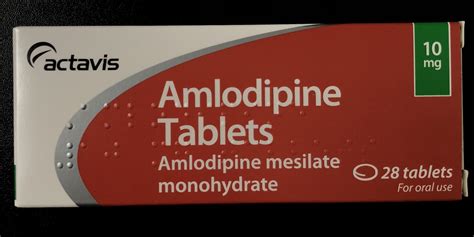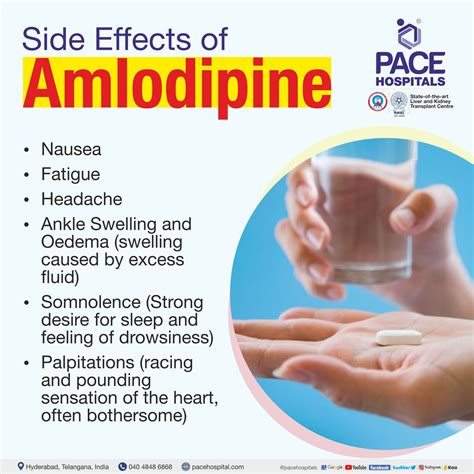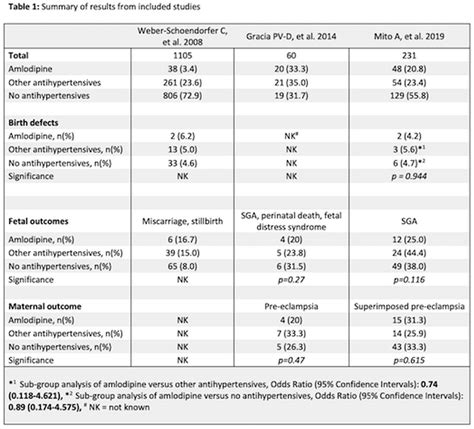Intro
Discover the ultimate Amlodipine Medication Guide, covering dosage, side effects, interactions, and benefits, to manage high blood pressure and chest pain, with expert advice on calcium channel blockers and cardiovascular health.
Amlodipine is a medication that has been widely used to treat high blood pressure and chest pain. It belongs to a class of medications known as calcium channel blockers, which work by relaxing blood vessels and increasing blood flow to the heart. With its effectiveness in managing cardiovascular conditions, amlodipine has become a staple in the treatment of hypertension and angina. In this article, we will delve into the world of amlodipine, exploring its benefits, working mechanisms, potential side effects, and practical tips for those taking this medication.
The importance of managing high blood pressure cannot be overstated. Hypertension is a major risk factor for heart disease, stroke, and kidney disease, making it essential to control blood pressure levels through lifestyle changes and medication. Amlodipine is often prescribed to patients with high blood pressure, as it has been shown to be effective in lowering blood pressure and reducing the risk of cardiovascular complications. Additionally, amlodipine is used to treat chest pain, also known as angina, which occurs when the heart muscle does not receive enough oxygen-rich blood.
Amlodipine works by blocking the entry of calcium into the muscle cells of the heart and blood vessels. This action relaxes the blood vessels, allowing them to widen and increase blood flow to the heart. As a result, the heart muscle receives more oxygen, reducing the frequency and severity of chest pain. Furthermore, the relaxation of blood vessels lowers blood pressure, reducing the strain on the heart and decreasing the risk of cardiovascular complications. With its dual action on blood pressure and blood flow, amlodipine has become a valuable medication in the management of cardiovascular disease.
Amlodipine Benefits and Uses

Amlodipine offers several benefits, including its ability to lower blood pressure, reduce chest pain, and improve overall cardiovascular health. Some of the key benefits of amlodipine include:
- Lowering blood pressure: Amlodipine has been shown to be effective in reducing blood pressure levels, which can help to reduce the risk of cardiovascular complications such as heart attack and stroke.
- Reducing chest pain: Amlodipine is used to treat chest pain, also known as angina, by increasing blood flow to the heart muscle and reducing the frequency and severity of pain.
- Improving cardiovascular health: By lowering blood pressure and increasing blood flow to the heart, amlodipine can help to improve overall cardiovascular health and reduce the risk of cardiovascular disease.
Amlodipine Working Mechanism
Amlodipine works by blocking the entry of calcium into the muscle cells of the heart and blood vessels. This action relaxes the blood vessels, allowing them to widen and increase blood flow to the heart. As a result, the heart muscle receives more oxygen, reducing the frequency and severity of chest pain. Additionally, the relaxation of blood vessels lowers blood pressure, reducing the strain on the heart and decreasing the risk of cardiovascular complications.Amlodipine Side Effects and Interactions

While amlodipine is generally well-tolerated, it can cause side effects in some individuals. Some common side effects of amlodipine include:
- Dizziness and lightheadedness
- Headache
- Fatigue
- Nausea and vomiting
- Swelling of the feet, ankles, and hands
It is essential to note that amlodipine can interact with other medications, including:
- Beta blockers: Amlodipine can increase the effects of beta blockers, which can lead to excessive lowering of blood pressure.
- Diuretics: Amlodipine can increase the effects of diuretics, which can lead to excessive loss of fluids and electrolytes.
- ACE inhibitors: Amlodipine can increase the effects of ACE inhibitors, which can lead to excessive lowering of blood pressure.
Amlodipine Dosage and Administration
The dosage and administration of amlodipine vary depending on the individual and the condition being treated. Typically, amlodipine is taken orally, once a day, with or without food. The usual starting dose is 5mg, which can be increased to 10mg after 7-14 days if necessary. It is essential to follow the instructions provided by the doctor and to take the medication as directed.Amlodipine Precautions and Warnings

Amlodipine is not suitable for everyone, particularly those with certain medical conditions or taking specific medications. Some precautions and warnings to consider include:
- Pregnancy and breastfeeding: Amlodipine should be used with caution in pregnant or breastfeeding women, as it can pass into breast milk and affect the baby.
- Hypotension: Amlodipine can cause excessive lowering of blood pressure, which can lead to dizziness, lightheadedness, and fainting.
- Heart failure: Amlodipine can worsen heart failure in some individuals, particularly those with severe heart failure.
Amlodipine Overdose and Withdrawal
In the event of an overdose, it is essential to seek medical attention immediately. Symptoms of an overdose may include: * Dizziness and lightheadedness * Headache * Fatigue * Nausea and vomiting * Abnormal heart rhythmsWithdrawal from amlodipine can occur if the medication is stopped suddenly. Symptoms of withdrawal may include:
- Increased blood pressure
- Chest pain
- Headache
- Fatigue
Amlodipine Alternatives and Comparisons

Amlodipine is not the only medication available for treating high blood pressure and chest pain. Some alternative medications include:
- Nifedipine: A calcium channel blocker that is similar to amlodipine but has a shorter duration of action.
- Verapamil: A calcium channel blocker that is used to treat high blood pressure, chest pain, and certain heart rhythm disorders.
- Atorvastatin: A statin medication that is used to lower cholesterol levels and reduce the risk of cardiovascular disease.
Amlodipine and Lifestyle Changes
While amlodipine can be effective in managing high blood pressure and chest pain, lifestyle changes can also play a crucial role in maintaining cardiovascular health. Some lifestyle changes to consider include: * Quitting smoking * Reducing salt intake * Increasing physical activity * Losing weight * Eating a healthy dietAmlodipine Conclusion and Future Directions

In conclusion, amlodipine is a valuable medication in the management of high blood pressure and chest pain. Its ability to lower blood pressure, reduce chest pain, and improve overall cardiovascular health makes it an essential treatment option for many individuals. However, it is crucial to follow the instructions provided by the doctor, to take the medication as directed, and to make lifestyle changes to maintain cardiovascular health.
As research continues to evolve, new uses and applications for amlodipine may emerge. For example, studies have suggested that amlodipine may have potential benefits in the treatment of certain types of cancer, such as prostate cancer. Additionally, the development of new formulations and delivery systems may improve the efficacy and tolerability of amlodipine.
What is amlodipine used for?
+Amlodipine is used to treat high blood pressure and chest pain, also known as angina.
How does amlodipine work?
+Amlodipine works by blocking the entry of calcium into the muscle cells of the heart and blood vessels, relaxing the blood vessels and increasing blood flow to the heart.
What are the common side effects of amlodipine?
+Common side effects of amlodipine include dizziness, headache, fatigue, nausea, and vomiting.
Can I take amlodipine with other medications?
+Amlodipine can interact with other medications, including beta blockers, diuretics, and ACE inhibitors. It is essential to consult with a doctor before taking amlodipine with other medications.
How long does it take for amlodipine to start working?
+Amlodipine can start working within a few hours of taking the medication, but it may take several days to reach its full effect.
We hope this article has provided you with a comprehensive understanding of amlodipine, its benefits, and its uses. If you have any further questions or concerns, please do not hesitate to reach out to your doctor or healthcare provider. Additionally, we invite you to share this article with others who may benefit from this information. By working together, we can promote cardiovascular health and reduce the risk of cardiovascular disease.
